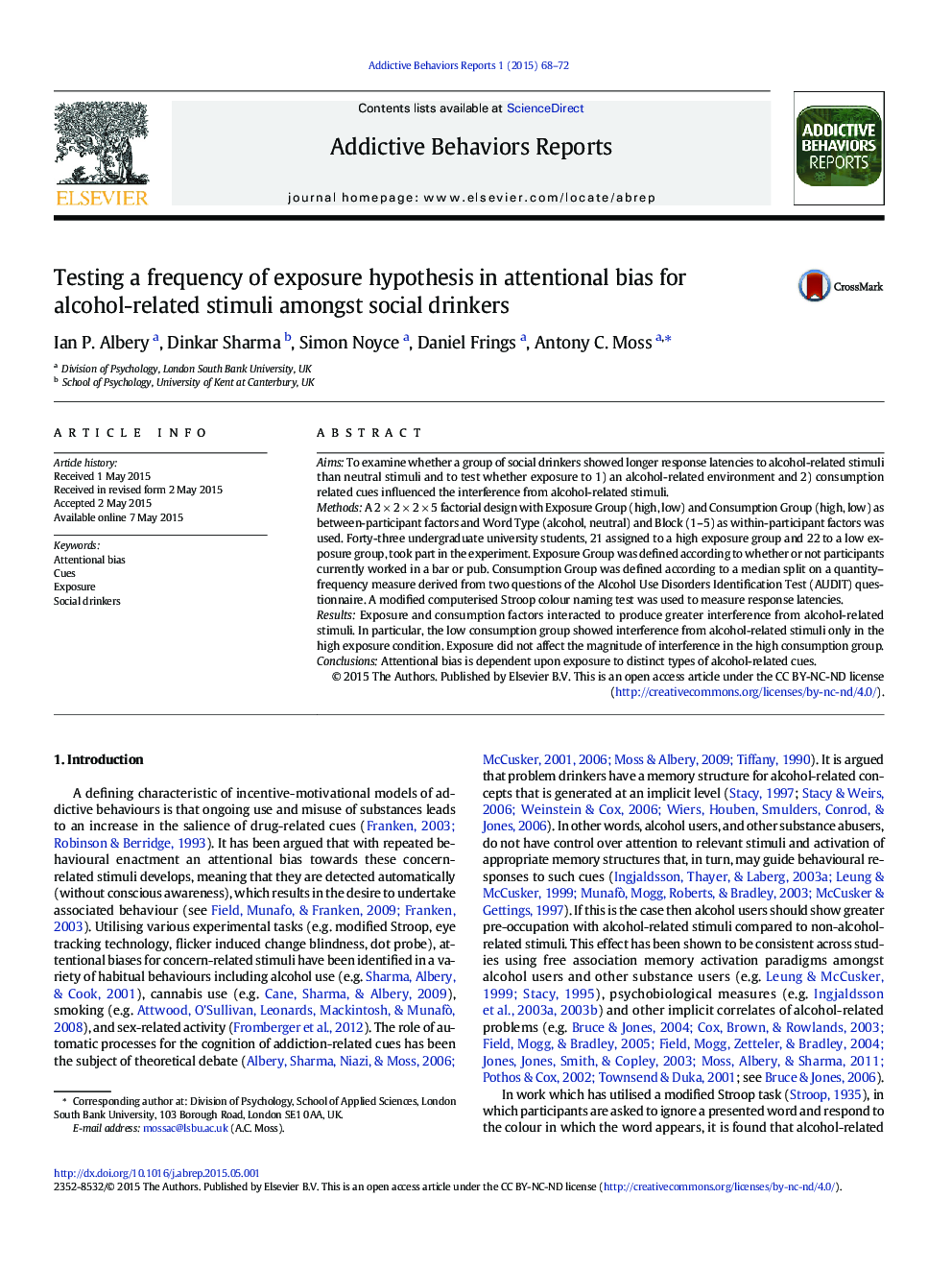| کد مقاله | کد نشریه | سال انتشار | مقاله انگلیسی | نسخه تمام متن |
|---|---|---|---|---|
| 900762 | 1472542 | 2015 | 5 صفحه PDF | دانلود رایگان |
• Tests a frequency of exposure hypothesis for attentional bias towards alcohol cues
• Findings suggest an impact of exposure dependent upon drinking history.
• Suggests differential impact of passive and active cue exposure on attentional bias
AimsTo examine whether a group of social drinkers showed longer response latencies to alcohol-related stimuli than neutral stimuli and to test whether exposure to 1) an alcohol-related environment and 2) consumption related cues influenced the interference from alcohol-related stimuli.MethodsA 2 × 2 × 2 × 5 factorial design with Exposure Group (high, low) and Consumption Group (high, low) as between-participant factors and Word Type (alcohol, neutral) and Block (1–5) as within-participant factors was used. Forty-three undergraduate university students, 21 assigned to a high exposure group and 22 to a low exposure group, took part in the experiment. Exposure Group was defined according to whether or not participants currently worked in a bar or pub. Consumption Group was defined according to a median split on a quantity–frequency measure derived from two questions of the Alcohol Use Disorders Identification Test (AUDIT) questionnaire. A modified computerised Stroop colour naming test was used to measure response latencies.ResultsExposure and consumption factors interacted to produce greater interference from alcohol-related stimuli. In particular, the low consumption group showed interference from alcohol-related stimuli only in the high exposure condition. Exposure did not affect the magnitude of interference in the high consumption group.ConclusionsAttentional bias is dependent upon exposure to distinct types of alcohol-related cues.
Journal: Addictive Behaviors Reports - Volume 1, June 2015, Pages 68–72
